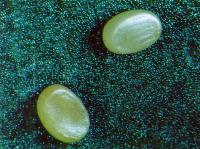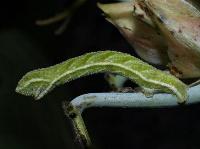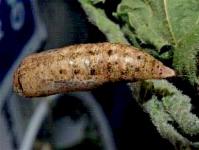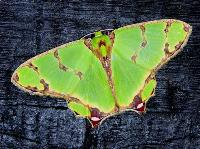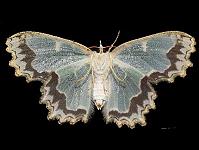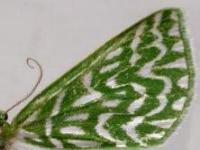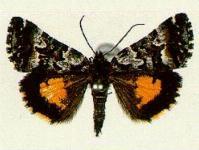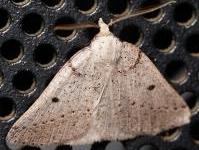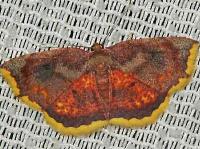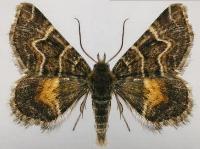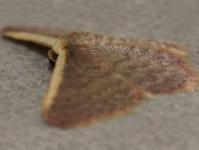There are more than 1,270 named Australian species in GEOMETRIDAE.
Here some notable species are listed here in their subfamilies and tribes.
Many of the Caterpillars of GEOMETRIDAE
pull their bodies into loops as they move.
These Caterpillars lack the first two or three pairs
of ventral
prolegs,
so that looping is their best means of progression.
This movement gives them some of their names.
Their latin name means "earth measurer".
They are often called Inch Worms because they measure
off about one inch at a time as they progress.
This
method of progression has been suggested as being
specially suitable for moving over rough terrain.
Some Caterpillars of this family are also called Twig Caterpillars
because they can raise themselves and stand on their claspers,
sticking straight out at an angle, and so looking like a twig.
They mostly pupate in leaf litter or in the soil in a flimsy cocoon.
Many of the adult moths are remarkable for their camouflaged wing patterns.
These patterns, often wavy lines, extend across both fore and hind wings.
These moths rest with wings outspread, and tightly pressed against
the surface on which they are sitting. The curved markings may be
the origin of their common name: "Waves": eg
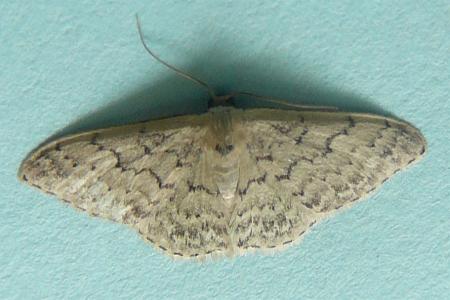
Idaea nephelota (Clouded Wave)
A large group of the GEOMETRIDAE have green wings:
these are called "Emeralds": eg
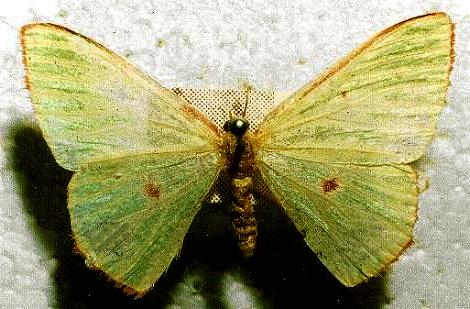
Chlorocoma cadmaria (Spectacular Emerald)
(updated 29 August 2012, 6 November 2024)

